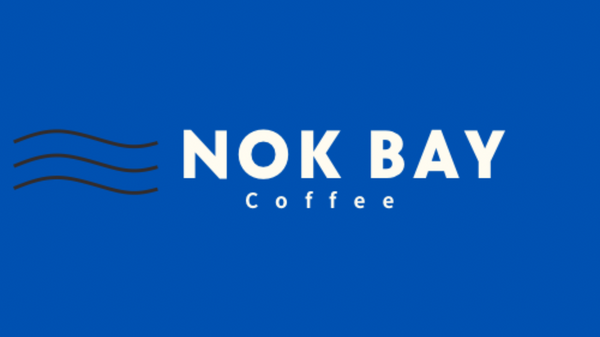
Colombian Coffee
Share
Colombia is the world's third largest coffee producer (after Brazil and Vietnam). Its coffee is famous for its balanced flavor, bright acidity and high cost-effectiveness. It is known as the "coffee treasure of South America." The following is a comprehensive analysis from historical background, production area characteristics, variety processing, flavor performance to market positioning:
1. History and Industrial Structure
1. Origin and development
- Coffee was introduced by Jesuit priests in the late 18th century and was originally grown in the eastern mountains, but expanded in the mid-19th century due to an explosion of international demand.
National Coffee Producers Federation (FNC): Founded in 1927, it integrates small farmers’ resources, establishes quality standards and global marketing. The trademark "Juan Valdez" has become the global image of Colombian coffee.
2. Smallholder-led model - There are approximately 500,000 coffee farmers in the country, 95% of whom are smallholders (average farm area < 5 hectares), forming a "cooperative system" for joint processing and sales.
- Transformation in recent years: From bulk commercial beans to fine micro-lots (Micro-Lot) to enhance international competitiveness. 2. Core production areas and terroir differences
Colombian coffee producing areas are distributed along three Cordilleras (branches of the Andes), with different altitudes and climates shaping diverse flavors:
1. Antioquia
- Altitude: 1,300–2,200 m
- Features: Classic "Colombian balanced flavor", mainly nuts and chocolate tones, with soft acidity, and representative production areas such as Medellín.
2. Huila Province
- Altitude: 1,500–2,000 m
- Features: This producing region has been a frequent winner in international competitions in recent years. It is known for its citrus, caramel sweetness and floral aroma. Sun-dried beans are particularly popular.
3. Cauca
- Altitude: 1,700–2,100 m
- Characteristics: High altitude and volcanic soil give the wine acidity and berry flavors, with bright acidity like red currants.
4. Other production areas - Tolima: Sweet taste of tropical fruits and honey, lower yield but higher quality rate.
- Nariño: From Ecuador, this high-altitude bean has green apple and brown sugar flavors.
3. Evolution of varieties and processing methods
1. Mainstream variety - Caturra: accounts for 40% of the total output, has strong disease resistance, active acidity, and is suitable for high-altitude cultivation.
- Castillo: A hybrid bred by FNC that is resistant to leaf rust and has a flavor similar to traditional Typica.
- Geisha: Introduced in recent years, it has performed amazingly in Huilan and Cauca, with auction prices repeatedly setting new records.
2. Processing innovation - Traditional water washing method: accounts for 70%, retaining clean acidity and citrus tones.
- Natural and honey-treated: popular after 2010, enhancing the sweetness of tropical fruits and caramel (such as Huilan's "Pink Bourbon").
- Anaerobic fermentation: an experimental processing method that creates bold flavors such as lychee and mango, often used in micro-batch competition beans.
4. Flavor Grading and Certification System
1. Grading standard - bean size: graded into "Supremo" (17-18 mesh) and "Excelso" (14-16 mesh), with Supremo being the highest commercial grade.
- Cupping score: Premium grade must reach SCA 80 points or above, and some micro batches can reach 88+ points.
2. Sustainability certification - Rainforest Alliance: accounts for 30% of total production, emphasizing ecological protection and fair trade.
- Café de Colombia certified origin: guaranteed to be 100% Colombian beans, with an anti-counterfeit label that can be traced back to the production area.
V. Market Positioning and Challenges
1. Global Role
- Bulk commercial beans: supplied to global chain brands (such as Starbucks and Nestle), known for their balanced flavor and stable quality.
- Premium breakthrough: After 2010, Huilan and Cauca wine regions have won many awards in the “Cup of Excellence”, reshaping their high-end image.
2. Industry Challenges - Climate Change: Changing rainfall patterns and leaf rust (La Roya) threaten production.
- International competition: Facing the impact of low-priced commercial beans from Brazil, Peru and other countries, it is necessary to strengthen the differentiation of high-quality products.
6. Purchase and brewing suggestions
1. Select the key points
- Origin label: Give priority to high-quality origins such as Huilan and Cauca, and avoid mixed beans that are only labeled "100% Colombian".
- Processing method: Natural/honey processing is suitable for those who prefer sweetness, while washed processing retains the classic acidity.
2. Brewing Guide
- Pour over: water temperature 88–92°C, medium-coarse grind, highlighting citrus and floral notes (such as Cauca washed beans).
- Espresso: Medium-dark roasted Supremo beans are suitable for making lattes, balancing the sweetness of nuts and milk.
From "balanced mass production" to "amazing boutique production", Colombian coffee demonstrates the fusion of tradition and innovation. Whether it's the sour citrus aroma of classic washed wine or the caramel explosion of Whelan sun-dried wine, every cup carries the terroir code of the Andes Mountains. If you want to explore its diverse features, you can start with high-altitude single-origin beans and feel how this land turns the ordinary into the extraordinary☕️.
Come and try it soon, shipping fee is included at any time.
Coffee beans: https://is.gd/yUiEdo
Mounting ear: https://is.gd/oKUHt6
#nokbaycoffee #dripbag #Colombiancoffee #coldbrewcoffee #coffee #coffeebeans #specialtycoffee
